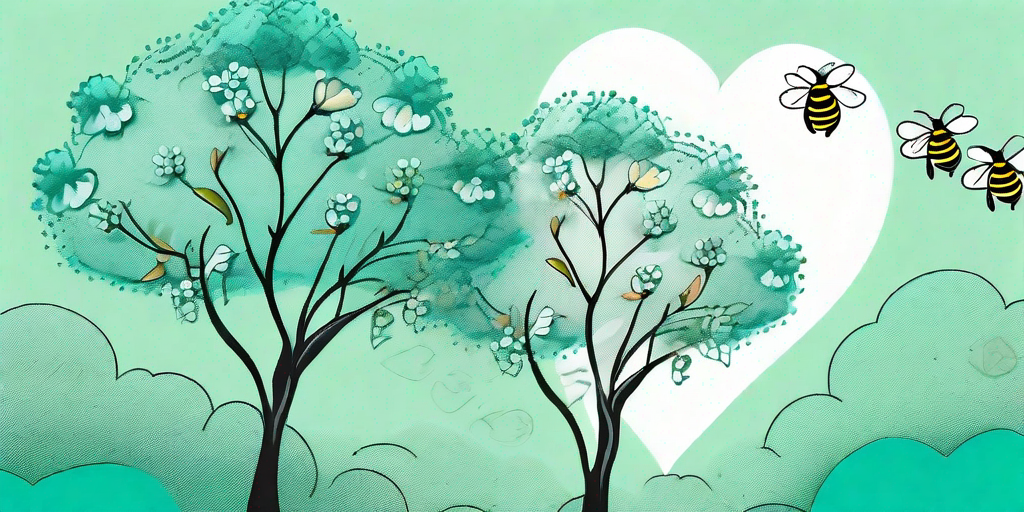
When it comes to romance, nothing quite compares to the intricate dance of pear tree pollination. It's a world of sweet whispers, gentle breezes, and the tireless work of buzzing bees. But before we dive into this botanical love story, let's set the stage with a bit of background information.
The Basics of Pear Tree Pollination
Just like in a classic romance novel, pear tree pollination involves a dashing hero, a beautiful heroine, and a dedicated matchmaker. In this case, the hero is the pollen grain, the heroine is the flower's stigma, and the matchmaker is often a busy bee (or the wind, if the bee is taking a day off).
Now, you might be thinking, "Why can't a pear tree just pollinate itself?" Well, dear reader, where's the fun in that? Self-pollination is like going to prom alone - it's possible, but it's much more exciting with a partner. Plus, cross-pollination (the process of one tree's pollen fertilizing another tree's flowers) results in stronger, healthier offspring.
Understanding the Pear Tree's Love Language
Each pear tree has a unique love language. Some varieties are self-fruitful, meaning they can pollinate themselves. Others are self-sterile, requiring the pollen from a different variety to bear fruit. And then there are partially self-fruitful trees, which can technically self-pollinate, but they'll produce more fruit with a little help from a friend.
Understanding your pear tree's love language is crucial for successful pollination. After all, you wouldn't try to woo a partner with a box of chocolates if they were allergic to cocoa, would you?
The Role of Bees in Pear Tree Pollination
Bees are the unsung heroes of pear tree pollination. These tiny matchmakers carry pollen from one tree to another, facilitating the magical process of fertilization. But it's not just any bee that can do this job. Honey bees are the most effective pollinators of pear trees, thanks to their size, abundance, and work ethic.
But let's not forget about the wind. While it's not as efficient as bees, wind can also play a role in pear tree pollination, especially in larger orchards. So next time you feel a breeze, remember that it might be carrying a love letter from one pear tree to another.
Attracting Bees to Your Pear Trees
So, how do you attract these buzzing Cupids to your pear trees? One way is to plant bee-friendly flowers around your orchard. Bees love bright, fragrant blooms, so consider planting marigolds, lavender, or sunflowers. You could also install a bee hotel to provide a safe haven for your pollinator pals.
Another tip is to avoid using pesticides during the flowering period. These chemicals can harm bees and other pollinators, disrupting the pollination process. Instead, opt for organic pest control methods, like introducing beneficial insects or using homemade sprays.
FAQs About Pear Tree Pollination
When do pear trees bloom?
Pear trees typically bloom in early to mid-spring, depending on the variety and the climate. The blossoms are white or pink and have a sweet, delicate fragrance that's irresistible to bees.
How can I tell if my pear tree has been pollinated?
After successful pollination, the pear tree's flowers will start to wither and fall off, making way for the developing fruit. If the flowers remain on the tree and no fruit appears, it's likely that the tree hasn't been pollinated.
Can I pollinate my pear tree by hand?
Yes, you can! If bees are scarce in your area, or if you just fancy playing matchmaker, you can pollinate your pear tree by hand. Simply collect some pollen on a small brush and gently dust it onto the stigma of each flower. It's a bit time-consuming, but think of it as a labor of love.
Conclusion
And there you have it - a glimpse into the fascinating world of pear tree pollination. It's a tale of love, partnership, and the tireless work of bees. So next time you bite into a juicy pear, take a moment to appreciate the complex dance of nature that made it possible.
And remember, whether you're a pear tree or a person, love truly is in the air!











